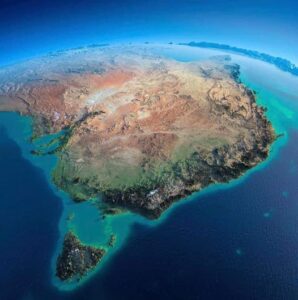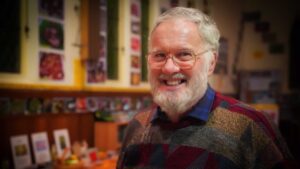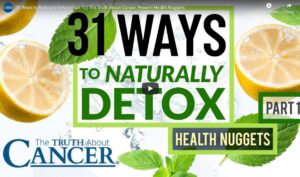Male bodies are about 60% water. Female bodies are about 55% water. The more overweight you are, the lower the percentage because fat contains very little water. Since so much of your body is made up of water it might pay to know a little about it.
Elsewhere I cover the insanity of putting fluoride into the water supply so will not repeat myself here.
Like any other health topic, there are a great many false datums about water masquerading as true. If you have done much reading on the subject of health and nutrition you are bound to have come across this datum:
“Most of us are dehydrated and should be drinking between six and ten 250 ml or 8 oz. glasses of water a day.”
To date I have not been able to find any scientific surveys or evidence that we need six to eight or ten glasses of water a day and I’m not alone. Heinz Valtin, MD, a retired physiology professor from Dartmouth Medical School and author of two textbooks on kidney function spent 10 months searching medical literature for scientific evidence of the 8 x 8 rule only to come up empty-handed. In 2002 he published the definitive paper on the subject in the American Journal of Physiology.
You may have heard too, “Add an extra glass for each cup of tea or coffee you drink as they are diuretics.” Christopher Vasey, ND, a Swiss naturopath and author of The Water Prescription (Healing Arts Press, 2006), points out that coffee, tea and cocoa drinks contain toxins called purines. These take large quantities of water to dilute them and flush them from the body. He also says that caffeinated drinks elevate blood pressure, increasing the rate of production and elimination of urine.
Artificially sweetened drinks add to the body’s toxic load. Sugar and coffee contribute to an acidic environment in the body. This impedes enzyme function and taxes the kidneys.
Some researchers claim that despite the above, tea and coffee do not have a net negative effect on body hydration.
My own observation of my body is that it does not feel good if I don’t drink enough water. Researchers have confirmed that as little as 5% less hydration than optimal results in reduced mental capacity and physical health. They estimate that half the world’s population is chronically dehydrated with 75% of Americans being dehydrated.
So, whether or not there are any scientifically validated surveys proving the necessity for 6-8 glasses of water a day, it would appear the most of us do not drink enough water.
This is detrimental for digestion as water is necessary for the body to make digestive juices. Not enough digestive juices and the food we eat goes through the body improperly digested. This can result in gas, bloating, nausea and loss of appetite.
One interesting datum is that it is not enough to just drink the stuff, you also have to make sure the water you drink is getting to where it needs to go – inside the cells. As we age less water makes it into the cells. It accumulates outside the cells in the extracellular or interstitial fluid. This is a biomarker of aging.
How to do this? Minerals are your ally here. Minerals are the carriers of water into the cells where they also activate enzymes. Enzymes are the basis of every biological process in the body from digestion and hormone secretion through to cognitive function.
TARGET: Experiment with a glass or two more of water a day and see if it results in you feeling better.
TARGET: Eat plenty of mineral rich vegetables and/or take a mineral supplement.
~~~~~~~~~~
One reason we don’t drink enough could be that treated town water often does not taste good and is not that good for us. Apart from fluoride and its negative effects, chlorine is added to kill pathogens.
Chlorine breaks apart and recombines with chemicals from lotions, shampoos and makeup that wash down the drains. Even worse, it combines with pharmaceutical residuals to form contaminated chloroform compounds in town water mains. Remember chloroform? It used to be used as an anesthetic. Not any more. The US National Institute for Occupational Safety and Health considers chloroform a carcinogen. It has been found to cause liver, kidney and thyroid tumours and has been linked to bladder and rectal cancer.
Town water contamination is now being linked to cancer and other serious ailments and birth defects. The Australian newspaper of 11 June 2008 carried a report on Australian town water, being seriously high in Trihalomethane [THM] chloroform contamination. The report cited tests conducted on 20,870 babies in Perth agreeing with similar tests by British and Taiwanese scientists on 396,049 babies born in Taiwan identifying serious birth defects and other health problems caused from Chlorinated Town water.
Sydney water is shown to be among the worst in the Western World, being more than 10 times above the safe level for THM contamination set by Health Authorities in Europe.
“Aqueous chlorine reacts with organic materials present in water sources to form THMs (trihalomethanes). Long-term exposure to these harmful by-products of disinfection has been linked to an increased risk of cancer and infant birth delivery problems. It is estimated that THMs in drinking water are responsible for as many as 2-17 percent of the bladder cancers diagnosed each year in the United States.
To protect the public, the U.S. Environmental Protection Agency has established a maximum contaminant level of 0.08 milligrams per liter (mg/L) for THMs. To conform to these regulations, many municipal water supplies have switched to an alternative method of disinfection using chloramination.” No longer available but originally from: http://www.wqa.org
~~~~~~~~~~
And it’s not just drinking the stuff that’s harmful. Apparently when we shower we breath in the chloroform and absorb it through our skin.
TARGET: Buy and fit a water filter for the shower. Pick one that removes chlorine, VOCs and THMs. VOCs are Volatile Organic Compounds – man-made chemicals, fuel components and byproducts. Eg. Formaldehyde. THMs are solvents, refrigerants and byproducts.
~~~~~~~~~~
Despite the addition of chlorine, town water can still contain pathogens so I add iodine or colloidal silver to my drinking water to kill pathogens in the water and in the body.
~~~~~~~~~~
Water can have different pH values. Here is a chart showing the pH values of different liquids courtesy of Environment Canada.
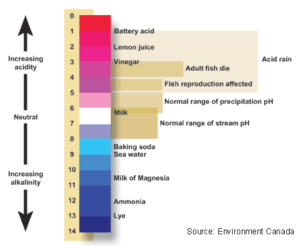
On this page there is an interesting discussion of the different types of water and the pros and cons of distilled and purified water:
http://answers.google.com/answers/main?cmd=threadview&id=210005
Of course there are completely contradictory claims made for purified and distilled water, no doubt coming from the purveyors of each. So please do your own reading and make up your own mind on what you think is best for you.
Here are some quotes on alkaline water on the site from which I purchased the alkalising water purifier I use. (Please note, if you click on this link and purchase something from their site they may pay me a commission.)
https://alkaway.infusionsoft.com/go/ahp/AlkTom
“My fundamental theory is that there’s only one sickness and one disease and that’s the over-acidification of the blood, then tissues.” Dr Robert Young, PhD, Research Scientist and author of ‘The pH Miracle’.
“All deaths from so-called natural causes are merely the endpoint of progressive acid saturation.” Dr George W. Crile, the highly-acclaimed “Father of Physiologic surgery”.
“If you have a health problem you are most likely to be acidic. Research shows that unless the body’s pH level is slightly alkaline, the body cannot heal itself.” Dr Michael Serafin, PhD, founder of Compounding Services, NSW.
“Alkaline, antioxidant water is probably the most profound discovery of our time. The question is often asked, Who should be drinking the alkaline, antioxidant water? The answer is simply everyone from children to octogenarians.” Ben Johnson, M.D., Doctor of Osteopathy, and Naturopathy.
It has only been recently discovered that it is the hydrogen in alkaline water that seems to have yielded most of the health benefits.
~~~~~~~~~~
On the other hand, here is an article on Dr Mercola’s site that disputes many of the claims made for drinking alkaline water.
http://articles.mercola.com/sites/articles/archive/2010/09/11/alkaline-water-interview.aspx#sdendnote13sym
And another that condemns distilled water as mineral leaching:
Early Death Comes From Drinking Distilled Water
During nearly 19 years of clinical practice I have had the opportunity to observe the health effects of drinking different types of water. Most of you would agree that drinking unfiltered tap water could be hazardous to your health because of things like
• parasites
• chlorine
• fluoride
• dioxins
Many health fanatics, however, are often surprised to hear me say that drinking distilled water on a regular, daily basis is potentially dangerous.
Paavo Airola wrote about the dangers of distilled water in the 1970’s when it first became a fad with the health food crowd.
Distillation is the process in which water is boiled, evaporated and the vapour condensed. Distilled water is free of dissolved minerals and, because of this, has the special property of being able to actively absorb toxic substances from the body and eliminate them. Studies validate the benefits of drinking distilled water when one is seeking to cleanse or detoxify the system for short periods of time (a few weeks at a time).
Fasting using distilled water can be dangerous because of the rapid loss of electrolytes (sodium, potassium, chloride) and trace minerals like magnesium, deficiencies of which can cause heart beat irregularities and high blood pressure. Cooking foods in distilled water pulls the minerals out of them and lowers their nutrient value.
Distilled water is an active absorber and when it comes into contact with air, it absorbs carbon dioxide, making it acidic. The more distilled water a person drinks, the higher the body acidity becomes.
According to the U.S. Environmental Protection Agency, “Distilled water, being essentially mineral-free, is very aggressive, in that it tends to dissolve substances with which it is in contact. Notably, carbon dioxide from the air is rapidly absorbed, making the water acidic and even more aggressive. Many metals are dissolved by distilled water.”
The most toxic commercial beverages that people consume (i.e. cola beverages and other soft drinks) are made from distilled water. Studies have consistently shown that heavy consumers of soft drinks (with or without sugar) spill huge amounts of calcium, magnesium and other trace minerals into the urine.
The more mineral loss, the greater the risk for osteoporosis, osteoarthritis, hypothyroidism, coronary artery disease, high blood pressure and a long list of degenerative diseases generally associated with premature aging.
A growing number of health care practitioners and scientists from around the world have been advocating the theory that aging and disease is the direct result of the accumulation of acid waste products in the body.
There is a great deal of scientific documentation that supports such a theory. A poor diet may be partially to blame for the waste accumulation.
These and other junk foods can cause the body to become more acidic:
• meats
• sugar
• alcohol
• fried foods
• soft drinks
• processed foods
• white flour products
• dairy products
Stress, whether mental or physical can lead to acid deposits in the body.
There is a correlation between the consumption of soft water (distilled water is extremely soft) and the incidence of cardiovascular disease. Cells, tissues and organs do not like to be dipped in acid and will do anything to buffer this acidity including the removal of minerals from the skeleton and the manufacture of bicarbonate in the blood.
The longer one drinks distilled water, the more likely the development of mineral deficiencies and an acid state.
I have done well over 3000 mineral evaluations using a combination of blood, urine and hair tests in my practice. Almost without exception, people who consume distilled water exclusively, eventually develop multiple mineral deficiencies.
Those who supplement their distilled water intake with trace minerals are not as deficient but still not as adequately nourished in minerals as their non-distilled water drinking counterparts even after several years of mineral supplementation.
The ideal water for the human body should be slightly alkaline and this requires the presence of minerals like
• calcium
• magnesium
Distilled water tends to be acidic and can only be recommended as a way of drawing poisons out of the body. Once this is accomplished, the continued drinking of distilled water is a bad idea.
Water filtered through reverse osmosis tends to be neutral and is acceptable for regular use provided minerals are supplemented.
Water filtered through a solid charcoal filter is slightly alkaline. Ozonation of this charcoal filtered water is ideal for daily drinking. Longevity is associated with the regular consumption of hard water (high in minerals). Disease and early death is more likely to be seen with the long term drinking of distilled water.
Avoid it except in special circumstances.
Zoltan P. Rona MD MSc
References
Airola, P. 1974. How To Get Well. Phoenix, AZ: Health Plus Publishers.
Baroody, Dr. Theodore A. Jr. Alkalinize or Die. California:Portal Books, 1995.
Haas, Elson M. Staying Healthy with Nutrition. The Complete Guide to Diet & Nutritional Medicine. Berkeley, California:Celestial Arts, 1992; p. 22.
Rona, Zoltan P. and Martin, Jeanne Marie. Return to the Joy of Health, Vancouver: Alive Books, 1995.
Rona, Zoltan P. Childhood Illness and The Allergy Connection. Rocklin, California:Prima Books, 1996.
~~~~~~~~~~
Here is a link to some water crystal pictures taken by a Japanese researcher who looked into the molecular structure of water:
http://www.life-enthusiast.com/twilight/research_emoto.htm
~~~~~~~~~~
Acid versus Alkaline pH Balance in Your Body
This is a good explanation of what it is, why you should know about it and what effects different foods, including water, have on it http://www.online-ganoderma.com/page/14235/default.asp
~~~~~~~~~~
Letting babies swim in chlorinated pools harms their health for life. Young children who swim in chlorinated pools may suffer an increased risk of lung infections and even lifelong asthma and respiratory allergies. From:
http://www.naturalnews.com/028928_swimming_pools_chlorine.html
~~~~~~~~~~
It truly is amazing what science is learning about the various states of water and the action of water in the body. Getting some sun helps alter the nature of water in the body. From:
http://articles.mercola.com/sites/articles/archive/2011/01/29/dr-pollack-on-structured-water.aspx
~~~~~~~~~~
On last point. I don’t know from where the idea came to drink water with meals but if stomach acid is formulated to break down the food to aid digestion it just doesn’t seem right to me to dilute it by drinking water with meals. I don’t drink for 20-30 minutes prior to a meal and rarely feel like drinking for an hour after one.
~~~~~~~~~~
From http://www.who.int/water_sanitation_health/dwq/nutrientschap12.pdf
Sufficient evidence is now available to confirm the health consequences from drinking water deficient in calcium or magnesium. Many studies show that higher water magnesium is related to decreased risks for CVD and especially for sudden death from CVD. This relationship has been independently described in epidemiological studies with different study designs, performed in different areas, different populations, and at different times. The consistent epidemiological observations are supported by the data from autopsy, clinical, and animal studies. Biological plausibility for a protective effect of magnesium is substantial, but the specificity is less evident due to the multifactorial aetiology of CVD.
In addition to an increased risk of sudden death, it has been suggested that intake of water low in magnesium may be associated with a higher risk of motor neuronal disease, pregnancy disorders (so-called preeclampsia), sudden death in infants, and some types of cancer. Recent studies suggest that the intake of soft water, i.e. water low in calcium, is associated with a higher risk of fracture in children, certain neurodegenerative 159 diseases, pre-term birth and low weight at birth and some types of cancer. Furthermore, the possible role of water calcium in the development of CVD cannot be excluded.
~~~~~~~~~~
…when used for cooking, demineralized water was found to cause substantial losses of all essential elements from foods such as vegetables, meat and cereals. Such losses may reach up to 60 percent for magnesium and calcium, 66 percent for copper, 70 percent for manganese, and 86 percent for cobalt. In contrast, when hard water (not treated with reverse osmosis) is used for cooking, there is minimal loss of these essential elements.
From https://www.uwhealth.org/news/dr-jacqueline-gerhart-theres-good-and-bad-to-using-reverse-osmosis-water-systems/36710
~~~~~~~~~~
Total Dissolved Solids
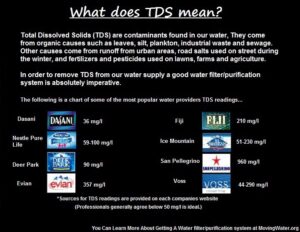
As you can see, there is a wide variation in the amount of dissolved solids in commercially available bottled water.
